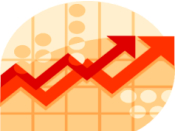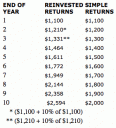 |
I have been getting a whole bunch of emails recently asking me for my picks of the highest dividend yielding stocks that I would recommend buying. I think this really speaks to two factors at play here. First, I do not make recommendations on what stocks to buy. I am not a financial advisor nor am I licensed to offer investment advice. Second, when trying to build a dividend portfolio it is not the dividend yield that is important – it is the dividend growth!
Dividend yield is simply the dividends per share divided by the share price of the company. Basically, what it tells an investor is at that point in time, your stock will yield dividend payments of X%. If the dividend per share of a company is $1.25 per year and the stock trades at $50 per share, then that stock is currently yielding 2.5%. If you bought that stock at $50 your yield would therefor be 2.5%. Sure it is great that you are receiving this income from the company, however there is something even more powerful that will impact your dividend income and ultimately your portfolio returns over a longer period of time. That force is called dividend growth.
Dividend growth occurs when a company consistently raises the dividend it pays to shareholders. Many companies do this on a yearly basis, and those are the stocks that I try to focus on in the individual stock component of my portfolio. The reason comes to down to one of the most basic of investment principles, yet one of the most important. Compounding Returns. As a company increases their dividends, that means investors receive more and more income. Over time these returns compound into more and more income. The image below really sums this up:
 [1]Click to Enlarge
[1]Click to EnlargeTherefore, if you are trying to add individual securities to your own portfolio, do not focus on the dividend yield as the be all and end all. Rather, focus on the dividend growth that company has experienced and before long your yield on investment will go through the roof.
Google+ [2]